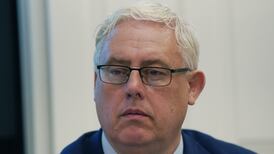Funding for Lending – or should it be Funds for Pretending? That seems a more appropriate name for the UK government’s much-hyped scheme to encourage banks to lend money to customers, launched last August with the aim of kickstarting the moribund economy.
Far from increasing their lending, however, the big banks actually reduced the amount they lent to individual and small-business customers in the final quarter of 2012.
Figures from the Bank of England, which operates the Funding for Lending scheme (FLS), show that net lending fell by £2.4 billion (€2.78 billion) in the last three months of the year compared with the previous three months.
The two bailed-out banks, Lloyds Banking Group and Royal Bank of Scotland, both reduced their lending, Lloyds by £3.1 billion and RBS by £1.7 billion. Only 13 of the 39 banks signed up to it so far have taken advantage of the FLS, which allows them to borrow cheaply if the funds are passed on to borrowers. In total, £14 billion has been taken out of the scheme, a figure too small to make much of an impact on the economy. Small businesses in particular say they are still starved of funds.
Barclays, which was not bailed out by the taxpayer, did manage to increase its lending, advancing £1.9 billion more during the period. Smaller lenders also put up a good show, certainly far better than Lloyds and RBS – the tiny Newbury Building Society, for example, increased its lending by £4 million over the quarter.
In defence of the banks that are not lending, many are quite rightly cutting back their activities in the wake of the financial crisis. And, in defence of the scheme, which is only seven months old, it has succeeded in nudging down rates for mortgage borrowers.
The Bank of England says it will take time for the funds to feed through into increased volumes and that the position would have been far worse had FLS not been available.
Even so, it is clear that the scheme has not matched the expectations of its launch, particularly for small-business owners. Their loan rates are little changed and funds seem as hard to secure as ever.
British business secretary Vince Cable admits the scheme may need to be “adapted” and will be discussing options with the Bank of England.
But the bank has other options, not least turning the printing presses back on. We may see action on this front as early as tomorrow, when the monetary policy committee makes its decision on interest rates and quantitative easing.
The addition of a further £25 billion to the quantitative easing programme, taking it to £400 billion, is a distinct possibility, particularly as Bank of England governor Sir Mervyn King voted to increase it at the previous month’s meeting. Two of his committee colleagues joined him, but they were out-voted.
Tomorrow also marks the fourth anniversary of Britain’s record-low interest rates of 0.5 per cent. Despite recent talk of a cut to 0.25 per cent or even negative interest rates, most economists expect no change. Some predict rates will be celebrating their fifth anniversary at 0.5 per cent in March 2014.
Lucrative job
Former Lloyds chief executive Eric Daniels presided over two of the most colossal mistakes in the bank’s history – the ill-fated takeover of Halifax Bank of Scotland at the height of the financial crisis and the reckless pursuit of payment protection insurance business, Britain’s most costly mis-selling scandal.
Yet far from retiring quietly with his £5 million pension pot, Daniels has landed a lucrative job to add to his growing portfolio. Private equity firm CVC Capital Partners has hired him as a senior adviser.
He is also an adviser to boutique investment bank StormHarbour and a non-executive director of headhunting firm Russell Reynolds Associates.
* Fiona Walsh writes for the Guardian newspaper in London










